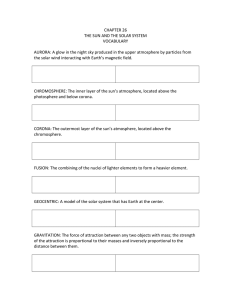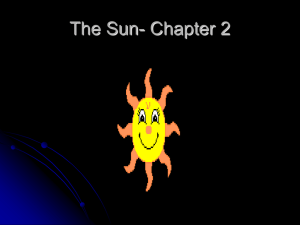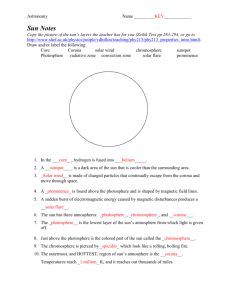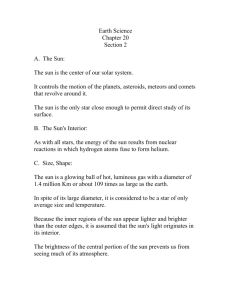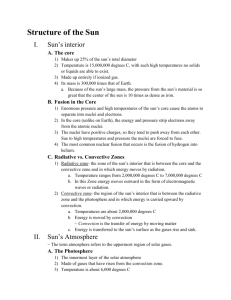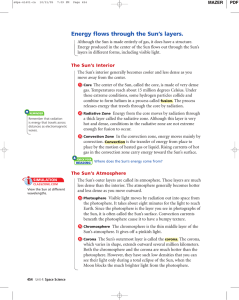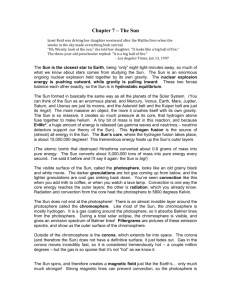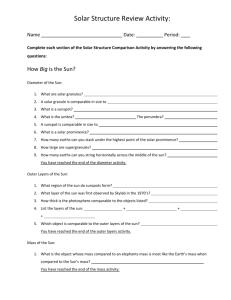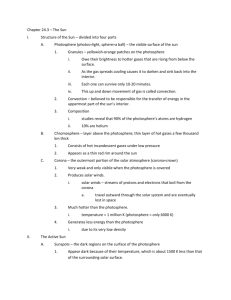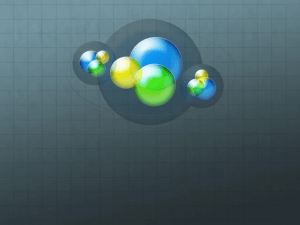Picture - The Russell Elementary Science Experience
advertisement
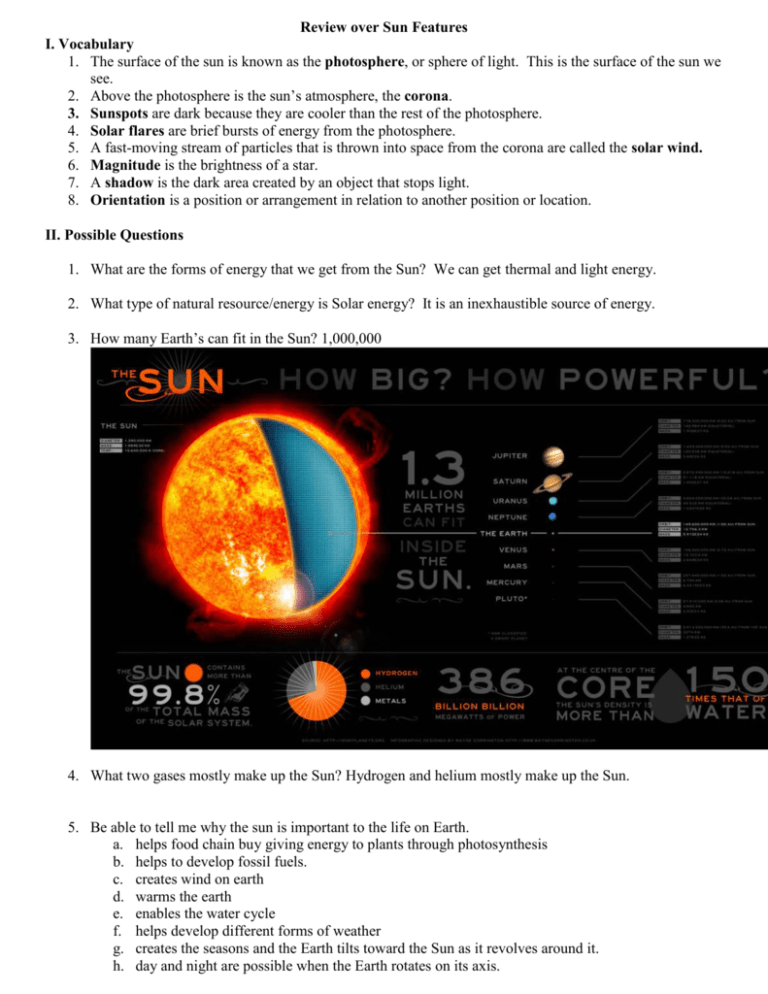
Review over Sun Features I. Vocabulary 1. The surface of the sun is known as the photosphere, or sphere of light. This is the surface of the sun we see. 2. Above the photosphere is the sun’s atmosphere, the corona. 3. Sunspots are dark because they are cooler than the rest of the photosphere. 4. Solar flares are brief bursts of energy from the photosphere. 5. A fast-moving stream of particles that is thrown into space from the corona are called the solar wind. 6. Magnitude is the brightness of a star. 7. A shadow is the dark area created by an object that stops light. 8. Orientation is a position or arrangement in relation to another position or location. II. Possible Questions 1. What are the forms of energy that we get from the Sun? We can get thermal and light energy. 2. What type of natural resource/energy is Solar energy? It is an inexhaustible source of energy. 3. How many Earth’s can fit in the Sun? 1,000,000 4. What two gases mostly make up the Sun? Hydrogen and helium mostly make up the Sun. 5. Be able to tell me why the sun is important to the life on Earth. a. helps food chain buy giving energy to plants through photosynthesis b. helps to develop fossil fuels. c. creates wind on earth d. warms the earth e. enables the water cycle f. helps develop different forms of weather g. creates the seasons and the Earth tilts toward the Sun as it revolves around it. h. day and night are possible when the Earth rotates on its axis. 6. What is the Sun classified as? A sun is classified as a medium sized yellow star. 7. What is nuclear fusion? Hydrogen atoms are smashed or forced into each other to create helium atoms due to the Sun’s very high temperatures and pressures. 8. How does energy from the Sun travel? It travels in straight lines. 9. How does the Earth protect us from harmful waves of energy from the Sun? The atmosphere from the Earth bounces back harmful waves. 10. Be able to identify the four layers of the Sun and its atmosphere on a picture. Core, radiation zone, convection zone, photosphere, and the corona pgs D32-D33 11. Where is the orientation of Sun in relation to the shadows it creates? The Sun is always opposite in orientation from the shadow it creates. 12. In what direction does the Sun rise in the mornings and fall in the evenings? The sun rises in the east in the morning and sets on the west in the evenings. 13. At what time is the shadow the shortest? Longest? The shadow is shortest at noon time and longest when the sun rises in the morning and sets in the evening. 14. What tool helps you to find direction? A compass helps you to find directions. III. Possible Bonus Questions 1. 2. 3. 4. 5. 6. 7. 8. What is the difference between mass and weight? How does a plant create its own food? What is the name of the process? How are volcanoes formed? How are mountains formed? How are earthquakes created? Explain the main processes in the water cycle? Where do fossil fuels come from? Give some examples of inexhaustible resources?
